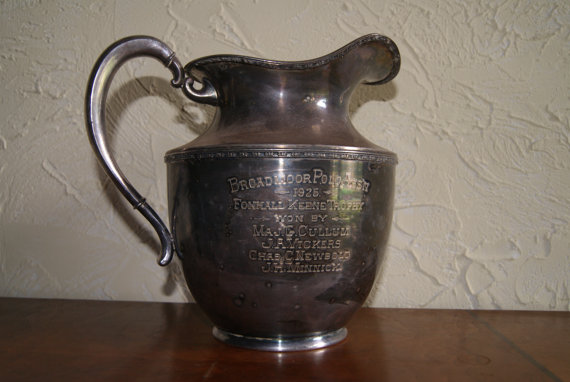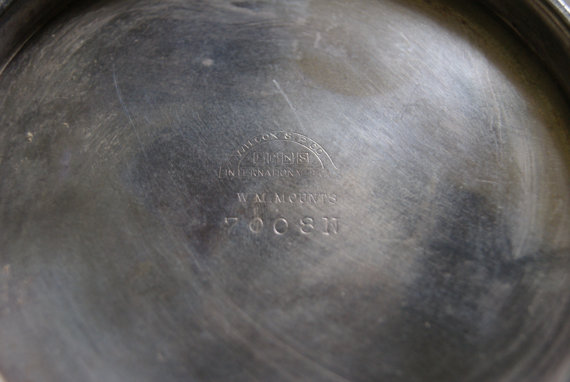Several years ago, I happened across this wonderful trophy that is in the shape of a pitcher at a local flea market. When I first saw it on the shelf, I didn’t see the engraving on the side of it. When I read what it said, I got to wondering about who Foxhall Keene was and what exactly what the Broadmoor was as well.

The first thing to do is to look at the pitcher itself. It was made by the Wilcox Silverplate Company, and it dates to somewhere between the 1910’s and the 1920’s. This helps solidify the date that’s on the pitcher, so the next thing to do is to figure out what the Broadmoor was.

Just what was or is the Broadmoor? The Broadmoor is a hotel and resort that’s located in Colorado Springs, Colorado. The original hotel is Broadmoor Main, and it was built in 1918. The resort has had hockey and golf championships, and there’s even polo that is played there.
There’s only one question left for this trophy—who in the world is Foxhall Keene?

Foxhall Keene was quite the competitor. He was a golfer who competed in the U.S. Open, an amateur tennis player, and he was also a pioneer race car driver who vied for the Gordon Bennett Cup (this was a racing cup that ran from 1900 to 1905 with several clubs racing for it).
Not only did he do all of this, he was also an American thoroughbred race horse owner and breeder. To top it off, he was a world and Olympic gold medalist in polo. Not only that, but he was also rated the best all-around polo player in the United States for eight consecutive years.
And that’s where the trophy comes into play. When the Broadmoor started to play polo at the resort, they named this trophy after Foxhall Keene because he was so accomplished in polo.
It’s always fun for me to find out what the history of a piece is, just like this trophy. What kinds of finds have you run across that you have found out the history of?





